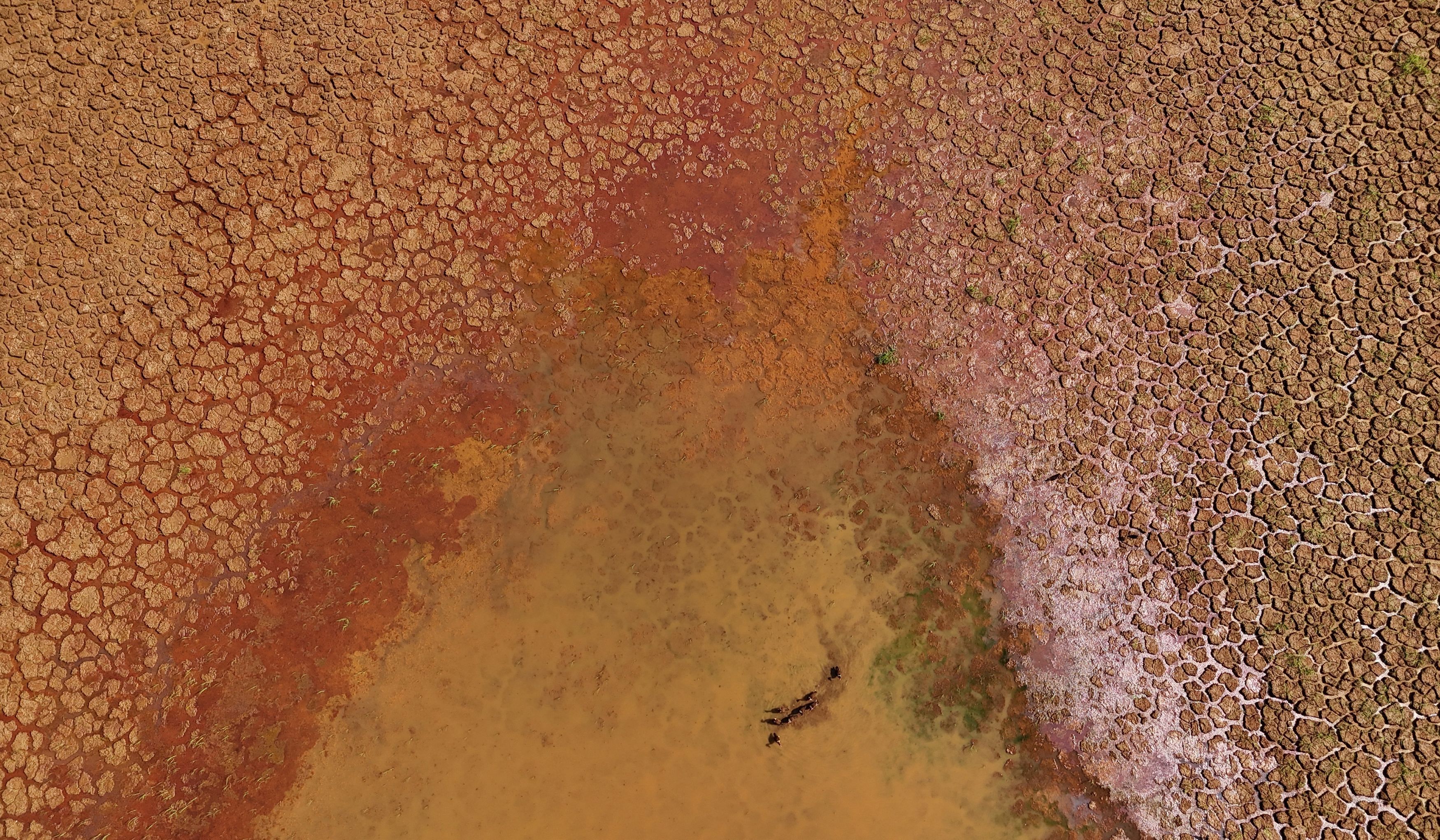
A drone view shows the dry bed of the Tapajos river during the intense drought that hits the Amazon.
Credit: Reuters photo
The WWF’s biennial Living Planet report, which was released last week, has sent a distressing message about the growing threats to all living species on earth. According to the Living Planet Index, which tracks the population trends of tens of thousands of species, there is a 73 per cent decline in the average size of monitored wildlife populations between 1970 and 2020. All species, not just wildlife species, face the threat. There are early warnings of the risk of extinction for many of them. The report has identified habitat loss and degradation, and over-harvesting, driven primarily by our global food system, as the main threats to wildlife populations around the world, followed by invasive species, disease, and the climate crisis. It has also identified pollution as another threat in Asia and the Pacific, which have recorded a 60 per cent average decline. The strongest decline was observed in freshwater ecosystems (85 per cent), followed by terrestrial (69 per cent) and marine (56 per cent) ecosystems. Over a million species are facing extinction.
The pressures on the natural environment have been steadily increasing but the gravity of the threat is yet to be fully recognised. An ecosystem is most vulnerable near the tipping point and many of them are already there. Ecosystem losses, such as the retreat of many Himalayan glaciers, the melting of the Antarctic ice, the dieback of Amazon rainforests and the die-off of coral reefs, will have consequences across the planet. The health of all ecosystems depends on biodiversity and it is key to the sustenance of life on earth. All living things, however small and big, depend on each other. It is the complex interactions between the species that create the setting for life at individual and collective levels. These determine the availability of clean air and water, provide for processes like pollination and help in regulation of climate and all natural phenomena which are essential for life. The health and survival of human beings and all life forms depend on them. Habitat loss, damage to ecosystems and shrinking of biodiversity accentuate climate change. They form a vicious circle which needs to be broken for the future of all life on earth.
The report has come weeks before the United Nations CoP16 biodiversity summit in Colombia, where governments, business leaders, civil society representatives and scientists discuss the challenges, opportunities and the need to reverse habitat loss and protect endangered species. Though targets have been set to stop the degradation of biodiversity, compliance has been poor. The commitments of the 2022 Kunming-Montreal Global Biodiversity Framework (GBF) have to be turned into actionable plans. The Living Planet report is a reminder of the tasks ahead.